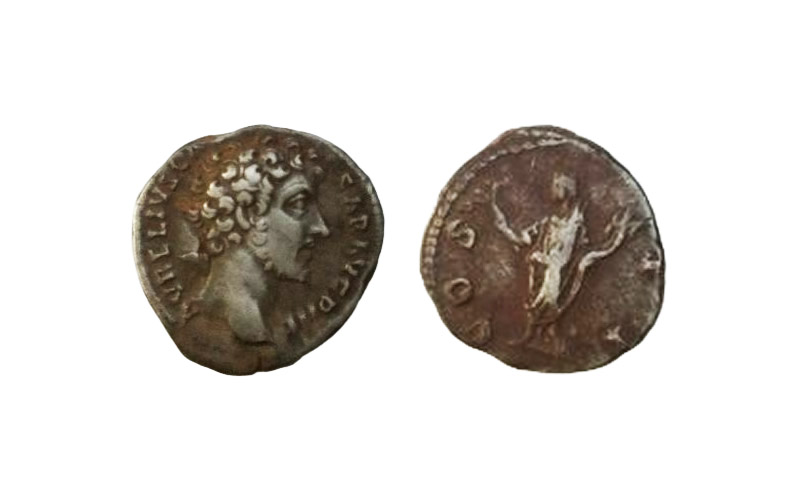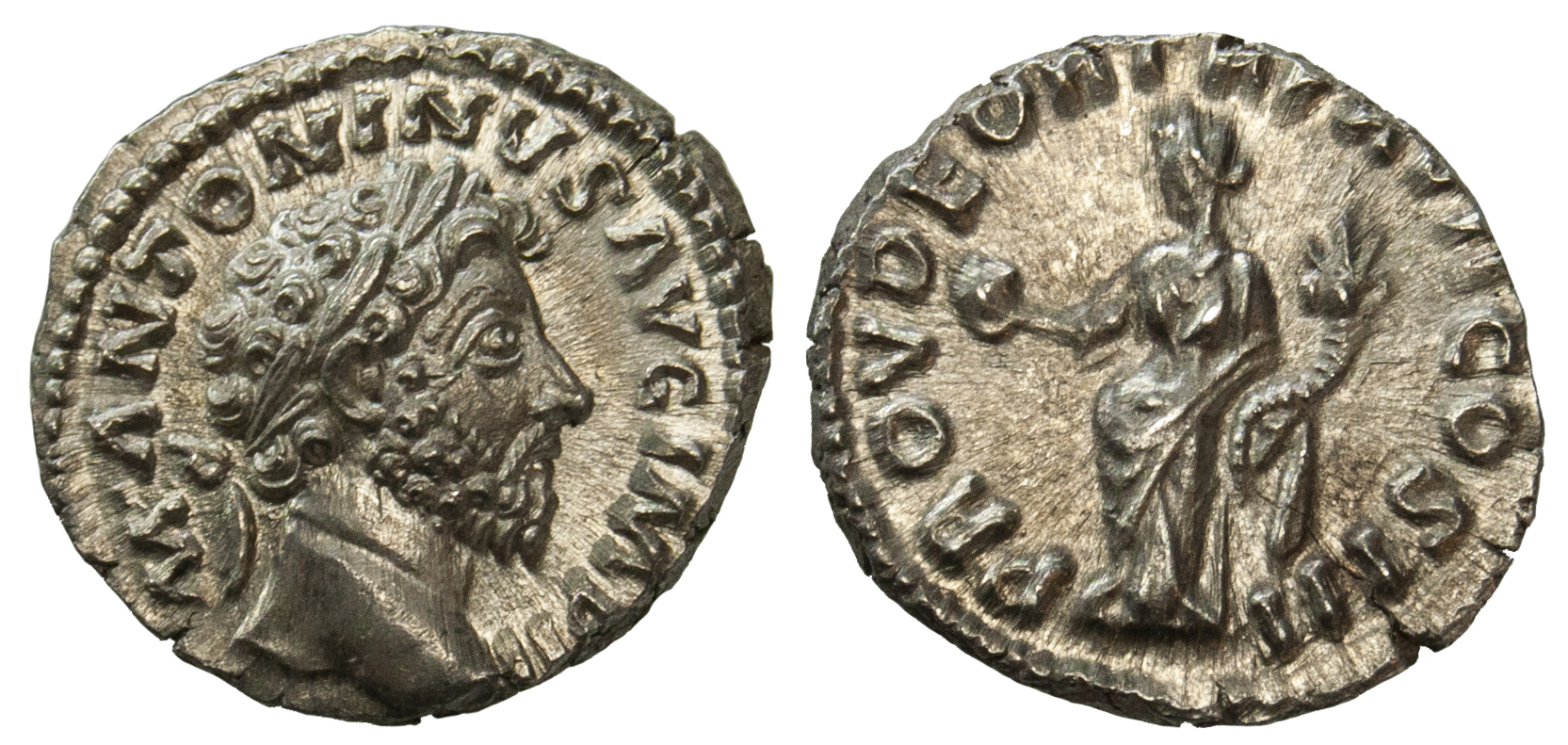

While loaves of baked bread were available in the market, most evidence on prices that have come down to us refer to the standard measure for wheat, the modius (about two gallons). The average Roman adult male ate two pounds of wheat bread each day. The Roman diet was very dependent on grain. This denarius of Septimius Severus shows a modius filled with fruit as the reverse type. Being finished with the disclaimer section, the remainder of this page will look at a few examples of wages and prices that might be of interest. In some cases this can lead to seeming contradictions but considering the variations in wages and prices we see from place to place and day to day today, the Roman monetary structure almost seems stable. We have relatively few organized price lists but have to piece what we know together from the occasional mention in surviving documents. Surviving records of wages and prices are, at best, spotty.

We can compare food to food but we must be very aware that the dietary expectations of days gone by prevent answering questions on the price in denarii of a pepperoni pizza. The worst problem of all, however, is the fact that there are very few things that were purchased by the average Roman that are still a common item of commerce today. This is exactly like the situation in modern days when we see differences in the price of fresh fruit in Florida, New York City and Alaska. Prices and wages varied across the Empire with prices in Rome being much different than in a small town in Syria. We can not consider 'Ancient Rome' as a single time but have to realize that any answers that apply to the time of Augustus may be totally inappropriate for the same question in the time of Constantine or even Trajan. Over that period the ups and downs of inflation and recession operated exactly like they have over the years from 1300 to 2000 AD. In the first place, Rome used coins for a period of over 700 years.

Gold was probably used mostly for large purchases by the wealthy with the common man rarely having this much money at one time. This gold aureus of Marcus Aurelius was worth 25 silver denarii and would represent a month's pay to a legionary soldier. What most folks want is a number like an exchange rate to the effect that a denarius was worth exactly $20US. These include "How can I clean my junk box coins and make them look like new?" and the subject of this page "How much were my coins worth back then?" At least most folks have read my index page where I posted my refusal to address the collector value of your coins (I don't do appraisals!!!) but questions on buying power are a fair, but difficult, subject. Most of the time I enjoy the mail that results from these pages but I must admit I dread the regular appearance of questions that I can not answer. Roman coins survive in very large numbers and are frequently found right across Europe, reaching the furthest corners of the Empire.What were my Roman coins worth 'back then'? Roman coins acted as a vehicle for the quick and wide-reaching spread of propagandic images of Imperial power, at the centre of which was the embodiment of Rome and all that its Empire stood for, the Emperor himself. Particularly during the first three centuries of the Empire's existence (27 BC-AD 284) images of historically recorded (and some unrecorded) people appear on the majority of coins. The use of the portrait is the most persistent and usually the most striking feature of coins of the Roman Empire. The denarius was a small silver coin and the principal silver coin issued in the ancient Roman currency system from the late 3rd century BC until the early 3rd century AD. The aureus was an ancient Roman gold coin, issued from around the 1st century BC up to the 4th century AD. Roma is a deity and the personification of Rome and the Roman state. This gold coin depicts the Emperor Marcus Aurelius (161-180 AD) and on the reverse Roma holding Victory.


 0 kommentar(er)
0 kommentar(er)
